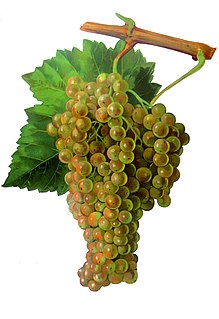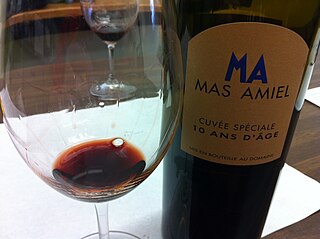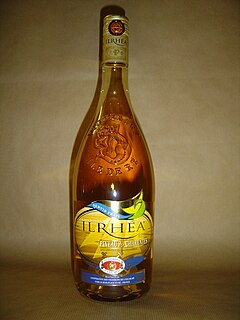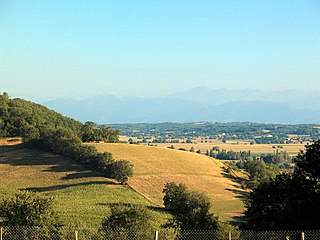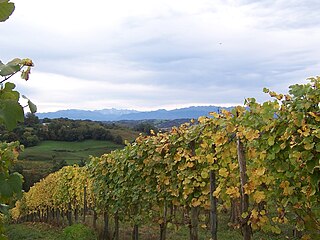
Armagnac ( /ˈɑːrmənjæk/ ; French: [aʁmaɲak] ) is a distinctive kind of brandy produced in the Armagnac region in Gascony, southwest France. It is distilled from wine usually made from a blend of grapes including Baco 22A, Colombard, Folle blanche and Ugni blanc, traditionally using column stills rather than the pot stills used in the production of cognac. The resulting spirit is then aged in oak barrels before release. Production is overseen by the Institut national de l'origine et de la qualité (INAO) and the Bureau National Interprofessionel de l'Armagnac (BNIA).

Brandy is a spirit produced by distilling wine. Brandy generally contains 35–60% alcohol by volume and is typically drunk as an after-dinner digestif. Some brandies are aged in wooden casks. Others are coloured with caramel colouring to imitate the effect of aging, and some are produced using a combination of both aging and colouring. Varieties of wine brandy can be found across the winemaking world. Among the most renowned are Cognac and Armagnac from southwestern France.
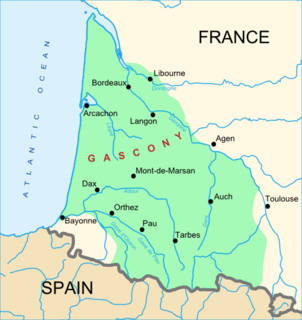
Gascony is an area of southwest France that was part of the "Province of Guyenne and Gascony" prior to the French Revolution. The region is vaguely defined, and the distinction between Guyenne and Gascony is unclear; by some they are seen to overlap, while others consider Gascony a part of Guyenne. Most definitions put Gascony east and south of Bordeaux.

France, officially the French Republic, is a country whose territory consists of metropolitan France in Western Europe and several overseas regions and territories. The metropolitan area of France extends from the Mediterranean Sea to the English Channel and the North Sea, and from the Rhine to the Atlantic Ocean. It is bordered by Belgium, Luxembourg and Germany to the northeast, Switzerland and Italy to the east, and Andorra and Spain to the south. The overseas territories include French Guiana in South America and several islands in the Atlantic, Pacific and Indian oceans. The country's 18 integral regions span a combined area of 643,801 square kilometres (248,573 sq mi) and a total population of 67.3 million. France, a sovereign state, is a unitary semi-presidential republic with its capital in Paris, the country's largest city and main cultural and commercial centre. Other major urban areas include Lyon, Marseille, Toulouse, Bordeaux, Lille and Nice.
Contents
Armagnac was one of the first areas in France to begin distilling spirits, but the overall volume of production is far smaller than Cognac production and therefore is less known outside Europe. In addition, it is for the most part made and sold by small producers, whereas Cognac production is dominated by big-name brands, especially Courvoisier (owned by Beam Suntory), Hennessy (LVMH), Martell (Pernod Ricard), and Rémy Martin (Rémy Cointreau).

Courvoisier is a brand of cognac owned by Beam Suntory, a subsidiary of Suntory Holdings of Osaka, Japan. The production is based in the town of Jarnac in the Charente region of France.
Beam Suntory, Inc. is a subsidiary of Suntory Beverage & Food Ltd, which itself is a subsidiary of Suntory Holdings of Osaka, Japan. Its headquarters are in Chicago, Illinois. It is the third largest producer of distilled beverages worldwide behind Diageo and Pernod Ricard.
Jas Hennessy & Co., or more simply Hennessy, is a Brandy house with headquarters in Cognac, France. Jas Hennessy & Co. sells about 50 million bottles a year worldwide, or more than 40 percent of the world’s cognac, making it the largest cognac producer. It is owned by Moët Hennessy, which is in turn owned by LVMH (66%) and Diageo (34%).











